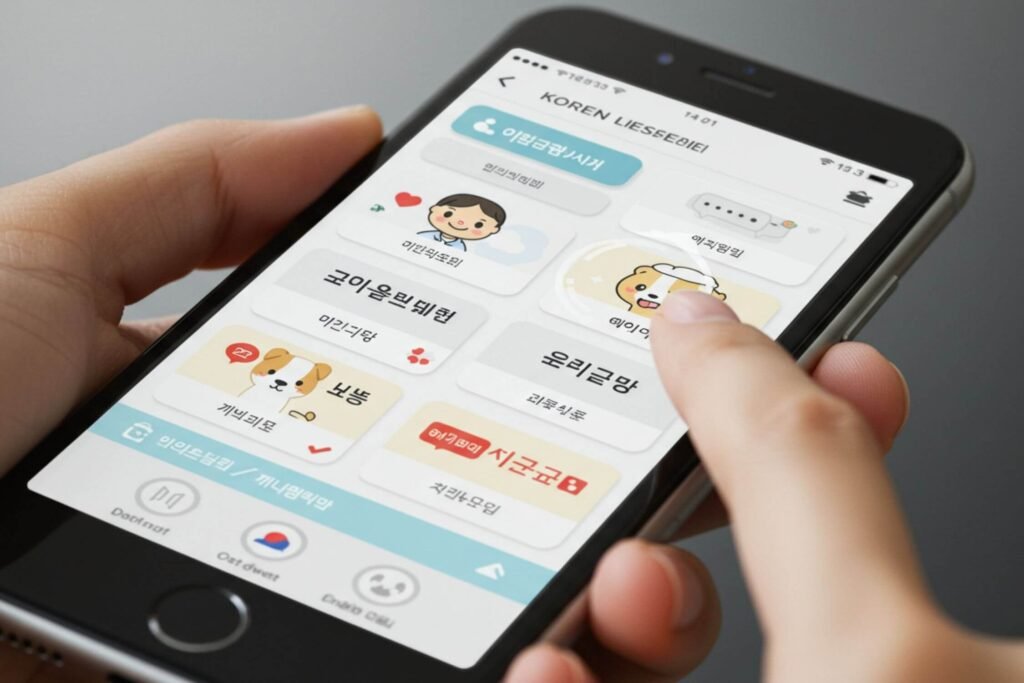Learning Korean has never been more exciting or accessible. With the global rise of K-pop, K-dramas, and Korean culture, millions of people are diving into the language every year. Whether you’re preparing for a trip to Seoul, hoping to understand your favorite idols, or simply want to explore a new language, starting with the right tools is key.
If you’re a beginner, one of the best ways to get started is with a Korean language learning app. The convenience of mobile apps means you can practice anytime, anywhere—on your commute, during your lunch break, or right before bed.
In this guide, we’ll take a closer look at the 10 best Korean language learning apps for beginners in 2025. These apps are user-friendly, engaging, and perfect for building a strong foundation in Korean.
1. Duolingo
Duolingo remains one of the most popular language learning apps in the world, and for good reason. It offers a gamified learning experience that keeps users motivated with daily streaks, rewards, and fun characters. For Korean beginners, Duolingo starts with the Hangul alphabet and gradually introduces vocabulary, grammar, and sentence construction.
The bite-sized lessons are easy to follow and can be completed in just a few minutes a day. While Duolingo may not dive deep into advanced grammar, it’s perfect for absolute beginners looking to build confidence and consistency.
2. LingoDeer
Designed specifically for Asian languages, LingoDeer is often praised for its structured and logical approach to learning Korean. Unlike many Western-centric apps, LingoDeer takes the unique features of Korean into account, making it ideal for beginners who want more than just vocabulary flashcards.
The app covers Hangul, grammar explanations, pronunciation tips, and cultural notes. One of its standout features is the clear audio recordings by native speakers, which are essential for improving listening and speaking skills. LingoDeer feels like a miniature language course in your pocket.
3. Drops
If you’re a visual learner, Drops might be your best match. This app focuses heavily on vocabulary acquisition through beautifully designed graphics and quick, swipe-based interactions. Instead of overwhelming users with grammar rules early on, Drops helps beginners associate words with images, making it easier to memorize and recall.
Each session is limited to just five minutes, which encourages daily consistency without the feeling of burnout. While it doesn’t offer in-depth grammar instruction, it’s a powerful supplement for expanding your Korean vocabulary quickly.
4. HelloTalk
For learners who want to practice with real people, HelloTalk offers a social twist. It connects language learners from around the world, allowing you to chat with native Korean speakers who are learning your language in return. This mutual exchange promotes organic learning through real conversations.
HelloTalk includes features like text correction, voice messages, and translation tools, making communication smoother for beginners. You’re not just memorizing textbook phrases—you’re engaging with the language in context, which helps build fluency faster.
5. Talk To Me In Korean (TTMIK)
Talk To Me In Korean started as a website and YouTube channel but now offers a robust mobile app tailored to serious learners. It’s best known for its grammar-focused lessons and easy-to-understand explanations.
The app follows a level-based curriculum that walks you through key concepts at a beginner’s pace. Whether you want to understand sentence structure, verb conjugation, or particles, TTMIK makes complex topics approachable. The content is also supported by quizzes, audio recordings, and cultural insights to deepen your understanding.
6. Memrise
Memrise takes a unique approach by blending memory techniques with real-world language exposure. The app uses spaced repetition, a scientifically proven method, to help users retain vocabulary longer. For Korean beginners, Memrise offers courses that start with Hangul and gradually introduce practical phrases and expressions.
What sets Memrise apart is its use of video clips featuring native speakers. Watching and listening to actual people speak Korean makes the learning process more authentic and relatable. It’s a great app for learners who want to train their ears and mimic natural pronunciation.
7. LingQ
LingQ is an immersive language learning app that emphasizes learning through context. Instead of drilling isolated words, it encourages users to read and listen to real Korean content, such as articles, stories, and podcasts, with helpful tools like vocabulary highlighting and instant translations.
As a beginner, you can start with their simplified beginner material and gradually move up to more complex texts. LingQ is especially useful for those who prefer learning through exposure rather than formal lessons. Over time, this method helps develop reading fluency and listening comprehension in a natural, engaging way.
8. TenguGo Hangul
Before diving into Korean vocabulary and grammar, it’s essential to learn the Korean writing system, Hangul. TenguGo Hangul is a free app that focuses exclusively on teaching the Korean alphabet. It’s perfect for absolute beginners who feel intimidated by unfamiliar characters.
The app provides audio, stroke order animations, pronunciation guides, and quizzes to reinforce what you’ve learned. Mastering Hangul early on gives you a huge advantage, and TenguGo makes this step clear and painless.
9. Mango Languages
Mango Languages is an underrated gem when it comes to learning Korean. Designed with a clean, user-friendly interface, this app emphasizes conversational Korean with a focus on real-world situations. Beginners will appreciate the step-by-step breakdown of phrases, including literal translations and cultural notes.
Each lesson includes listening, speaking, reading, and grammar, making it a well-rounded tool for language acquisition. Mango also tracks your progress and provides personalized review sessions to keep you sharp.
10. Naver Papago
While not a traditional language learning app, Naver Papago is an essential companion for Korean learners. It’s a translation and dictionary app created by Korea’s leading search engine, Naver. Papago offers voice, text, and image translation, all tailored to the nuances of Korean.
Beginners can use it to look up unfamiliar words, check grammar structures, and even get pronunciation help. Its accuracy for Korean-English translations is often better than Google Translate, especially for idioms and slang. Pairing this app with a dedicated learning platform can boost your progress and confidence.
Bottom line
As a beginner, choosing the best Korean language app depends on your learning style and goals. If you’re just starting and want a playful introduction, Duolingo or Drops might be ideal. For a deeper dive into grammar and structure, LingoDeer and TTMIK offer excellent resources. Social learners may gravitate toward HelloTalk, while immersion fans might prefer LingQ.
No single app will make you fluent overnight, but combining a few of these tools will give you a well-rounded experience. Make it a habit, stay curious, and immerse yourself in the beauty of the Korean language.
Learning Korean is a journey, and with the right app, it’s one you’ll genuinely enjoy.



